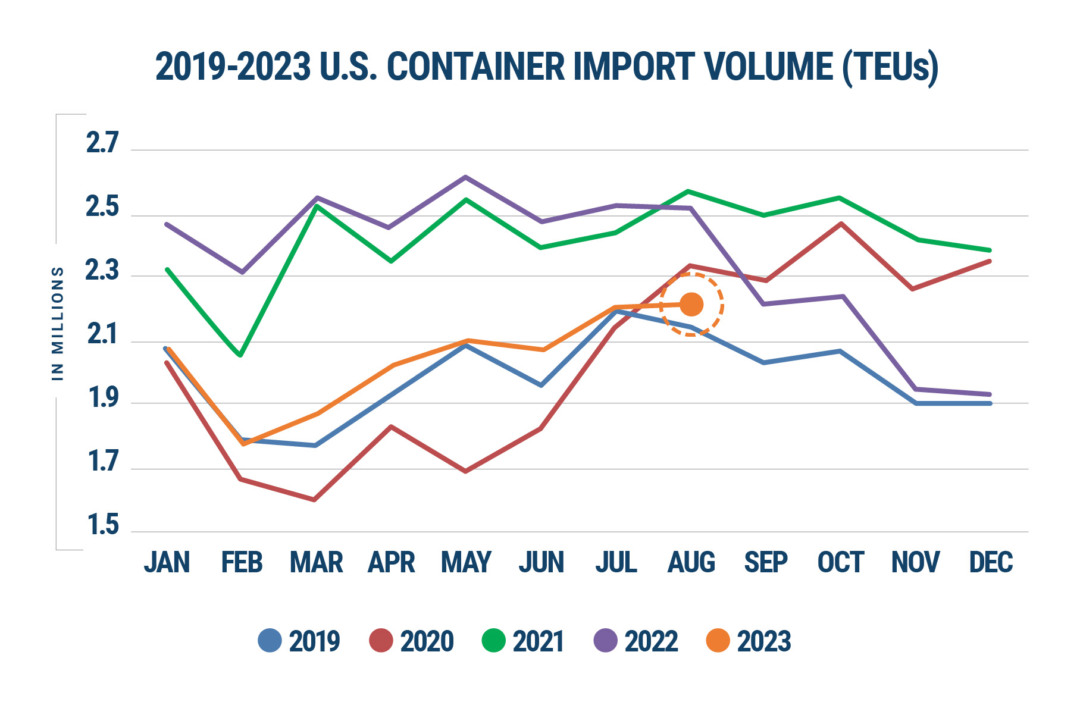U.S. container import volume rose slightly in August, mirroring pre-pandemic patterns
Descartes says global supply chain challenges have stabilized

U.S. container import volume in August increased slightly compared to the previous month, showing continued consistency with pre-pandemic 2019 results and suggesting that key challenges to global supply chain performance in 2023 have stabilized, logistics technology firm Descartes Systems Group said.
Despite the volume increase, port transit times remained close to their lowest levels since Descartes began tracking them, the company said in its “September Global Shipping Report.” That’s because the U.S. West Coast labor situation is resolved, and because while the Panama drought is slowing certain types of shipping passing through the Panama Canal, U.S. container imports do not appear to be affected to date.
By the numbers, August 2023 U.S. container import volumes increased 0.4% from July to 2,196,268 twenty-foot equivalent units (TEUs). That mark is 13.2% lower than the pandemic recovery spike of August 2022, but is up 2.5% compared to pre-pandemic August 2019.
“In August, U.S. import container volume flattened and is still relatively consistent with the peak season patterns we would see pre-pandemic,” Chris Jones, EVP Industry Descartes, said in a release. “While the drought in Panama is affecting some shipping traffic, U.S. container import volumes do not appear to be impacted as volumes at the Gulf ports over the last two months have been at their highest levels this year… and transit times have been consistently low.”
Related Articles
Copyright ©2024. All Rights ReservedDesign, CMS, Hosting & Web Development :: ePublishing